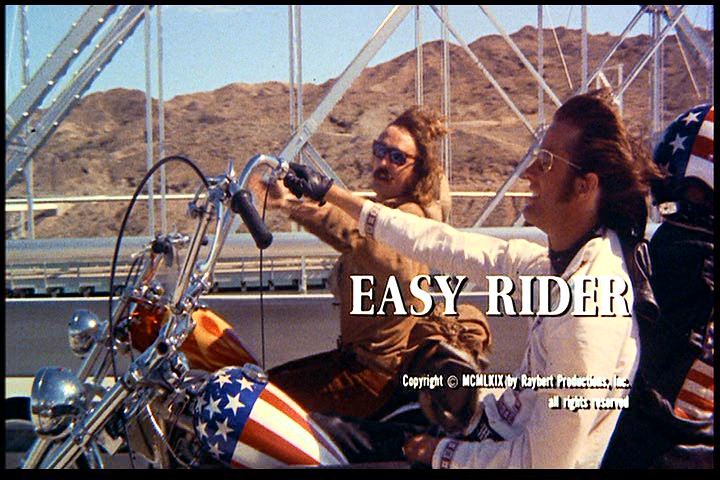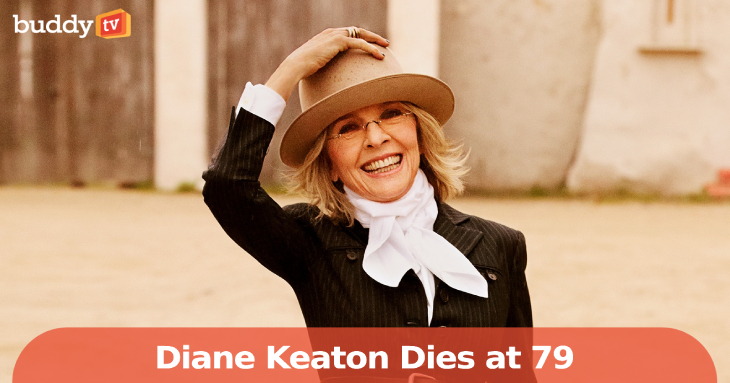
The news of Diane Keaton’s death at 79 has sent ripples of profound sadness and shock throughout the entertainment world and far beyond. An Oscar-winning star whose vibrant presence graced “Annie Hall,” “The Godfather” films, and “Father of the Bride,” Keaton was an actor of singular talent and an individual whose quirky, inimitable manner resonated deeply with generations of fans. Her passing marks the end of an era for a performer who consistently pushed boundaries and defined cinematic artistry with grace and authenticity.
A family member confirmed to The Associated Press that Keaton died in California, surrounded by loved ones. While no specific cause of death was immediately disclosed by her representatives, People magazine, which first reported the news on Saturday, noted a heartbreaking detail: her health had experienced a “very sudden” decline in the months leading up to her death. This revelation only deepened the sense of loss for many, highlighting the unexpected nature of her passing.
An anonymous friend, speaking to People, shared further insight into this private struggle, stating, “It was so unexpected, especially for someone with such strength and spirit.” The friend added that “In her final months, she was surrounded only by her closest family, who chose to keep things very private. Even longtime friends weren’t fully aware of what was happening.” This paints a picture of a fiercely independent woman navigating her final journey with the intimacy and discretion that often characterized her life.
Let us now begin exploring the multifaceted legacy of Diane Keaton, starting with the circumstances of her passing and the immediate outpouring of grief and admiration.
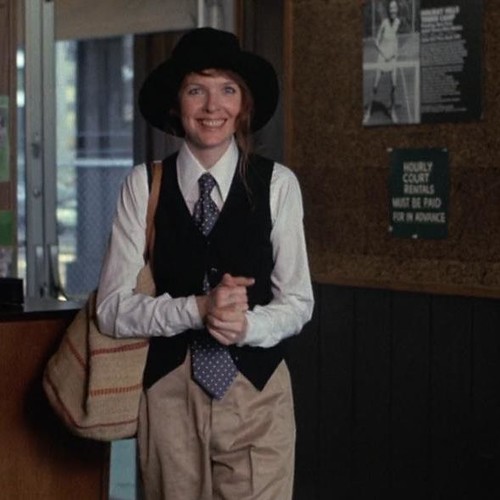
1. **The Sudden Passing of a Legend: Initial Reports and Family Confirmation**The world woke to the unexpected and somber news of Diane Keaton’s passing on a recent Saturday, marking the end of a remarkable life and career at the age of 79. It was People magazine that initially brought this sorrowful announcement to public attention, with a family member subsequently confirming the details to The Associated Press. These initial reports quickly spread, causing a wave of disbelief and sorrow across Hollywood and among her legions of fans globally.
Further reports from the Los Angeles Fire Department indicated a medical call to Keaton’s Brentwood home on Saturday morning, followed by the transport of a patient to a hospital. While the exact cause of death was not immediately made public by her representatives, the sequence of events provided a poignant backdrop to the family’s request for privacy during this time of profound grief. The absence of specific medical details has done little to diminish the profound impact of her loss.
The sheer suddenness of Keaton’s passing, particularly for an icon so closely associated with vitality and a distinctive zest for life, underscores the shock felt by many. Her family’s confirmation that she died in California, surrounded by those she held dearest, offers a measure of comfort amidst the sorrow, suggesting she was in a peaceful setting during her final moments. This quiet departure, shrouded in the warmth of family, stands as a testament to the private nature she maintained throughout her illustrious public life.
2. **An Unexpected Decline: Insights into Keaton’s Health in Her Final Months**While the official cause of Diane Keaton’s death remains undisclosed, a significant detail emerging from initial reports by People magazine sheds light on her final months: her health had “declined very suddenly.” This insight, provided by an anonymous friend, offers a poignant glimpse into the private challenges faced by the beloved actress, challenging the public image of enduring strength and spirit that she so famously projected. The rapid nature of her health’s deterioration was profoundly heartbreaking for those closest to her.
The friend further elaborated on the unexpected turn of events, stating, “It was so unexpected, especially for someone with such strength and spirit.” This observation speaks volumes about Keaton’s intrinsic vitality and resilience, making her sudden decline all the more impactful. For a woman known for her robust presence and unwavering originality, such a swift change in health came as a shock even to those who admired her deeply.
Moreover, the account reveals the intensely private nature of Keaton’s final journey. “In her final months, she was surrounded only by her closest family, who chose to keep things very private. Even longtime friends weren’t fully aware of what was happening,” the friend conveyed. This level of discretion, where even long-standing companions were not fully privy to her struggle, underscores her family’s commitment to protecting her privacy and allowing her to face her challenges with dignity, away from the public gaze.
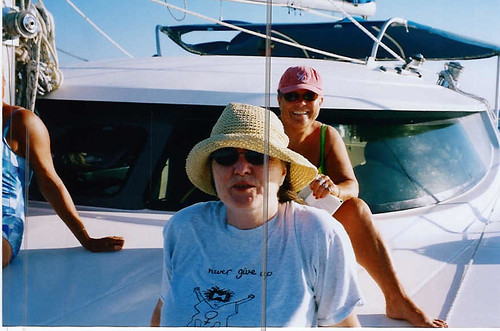
3. **A Wave of Tributes: Hollywood Mourns the Loss of a Singular Talent**The news of Diane Keaton’s passing reverberated instantly across Hollywood, prompting a heartfelt and extensive outpouring of tributes from a constellation of stars who had worked with her, admired her, or were simply captivated by her unique artistry. These messages painted a consistent picture of a performer whose talent, originality, and genuine spirit left an indelible mark on everyone she encountered, both on and off screen. The depth of emotion conveyed in these tributes underscored her singular status in the industry.
Francis Ford Coppola, the legendary director who cast Keaton in “The Godfather,” expressed his grief on Instagram, stating, “Words can’t express the wonder and talent of Diane Keaton. Endlessly intelligent, so beautiful…Everything about Diane was creativity personified.” This profound statement from a long-time collaborator highlights the multifaceted nature of her genius and the deep respect she commanded from even the most revered figures in cinema. His words are a testament to her inspirational influence.
Other notable co-stars and admirers added their voices to the chorus of remembrance. Bette Midler, her castmate in “The First Wives Club,” celebrated Keaton as “hilarious, a complete original, and completely without guile, or any of the competitiveness one would have expected from such a star. What you saw was who she was…oh, la, lala!” Leonardo DiCaprio, who played her nephew in “Marvin’s Room,” simply called her “one of a kind. Brilliant, funny and unapologetically herself…she will be deeply missed.” Reese Witherspoon lauded her as “just a truly original person,” and Jane Fonda found it “hard to believe,” encapsulating the collective shock. Even Woody Allen, her long-time muse and friend, was reportedly “extremely distraught and surprised and upset,” reflecting the personal impact of her loss on those who shared her journey.
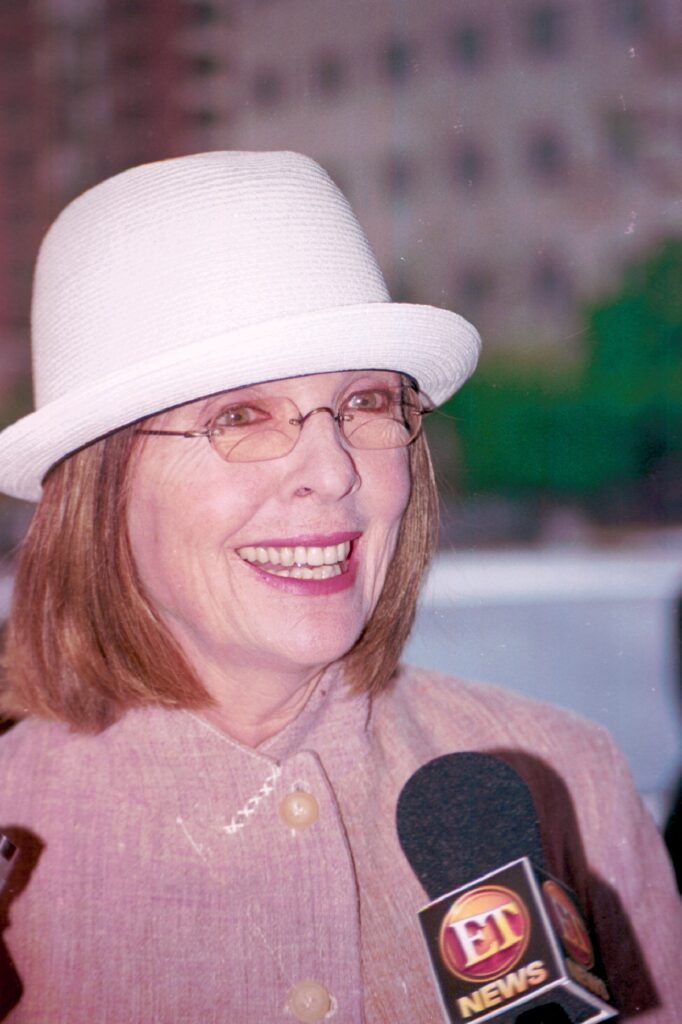
4. **The Making of an Icon: From “Hair” to “The Godfather” Breakthrough**Born Diane Hall in Los Angeles in January 1946, Diane Keaton’s path to becoming a Hollywood icon was not a predestined one, despite her later immersion in the film industry. Her parents, a homemaker and photographer mother and a father in real estate and civil engineering, instilled in her a deep love for the arts, from fashion to architecture, which would later manifest in her distinctive style and creative pursuits. It was this early appreciation for artistic expression that set her on a trajectory toward the stage.
Keaton’s initial foray into performance began with a strong pull toward theater and singing during her school years in Santa Ana, California. Her dedication led her to drop out of college after just one year, making the ambitious move to Manhattan to pursue her acting dreams. It was there that she adopted her mother’s maiden name, Keaton, as her professional surname, due to another Diane Hall already being registered with Actors’ Equity. This marked an early step in forging the unique identity that would become synonymous with her career.
Her foundational training under the revered Sanford Meisner in New York proved to be a pivotal influence, shaping her approach to acting. Keaton credited Meisner with providing her the freedom to “chart the complex terrain of human behavior within the safety of his guidance,” a pedagogical approach that made “playing with fire fun.” She further reflected in her 2012 memoir, “Then Again,” that Meisner “helped me learn to appreciate the darker side of behavior,” enabling her to “delve into such dangerous, illuminating territory.” These experiences on the stage, including her start as an understudy in Broadway’s “Hair” – where she famously declined to perform for a sizable (at the time) $50 bonus – and a Tony nomination for Woody Allen’s 1968 play “Play It Again, Sam,” laid the groundwork for her eventual cinematic breakthrough in Francis Ford Coppola’s “The Godfather.” She made her film debut in the 1970 romantic comedy “Lovers and Other Strangers” before truly becoming a household name with her role as Kay Adams.

5. **The “Annie Hall” Phenomenon: Oscar Win and Enduring Cultural Impact**In 1977, Diane Keaton solidified her status as a cinematic legend with her star-making performance in Woody Allen’s “Annie Hall,” a film that would not only earn her an Academy Award for Best Actress but also redefine the romantic comedy genre and establish her as a cultural touchstone. Her portrayal of the infectious, eccentric Annie, whom Allen’s character Alvy Singer could not get over, was hailed as a marvel of naturalism and comedic timing, becoming the heart of what many consider one of the greatest romantic comedies of all time.
Keaton’s “Annie Hall” character transcended the screen, creating an immediate and lasting impact on fashion and female self-expression. Her distinctive “La-dee-da, la-dee-da” phrasing, combined with her iconic wardrobe of neckties, bowler hats, vests, and khakis, became instantly identifiable. This gender-nonconforming sense of style was decidedly ahead of its time, showcasing an authentic sartorial mix that Keaton would maintain well into her later years, making her a trailblazer in personal fashion.
The film’s resonance was not lost on critics, with Vincent Canby of The New York Times proclaiming, “As Annie Hall, Miss Keaton emerges as Woody Allen’s Liv Ullman. His camera finds beauty and emotional resources that somehow escape the notice of other directors. Her Annie Hall is a marvelous nut.” Keaton herself acknowledged the parallels between the character and her own life, writing in her memoir, “My last name is Hall. Woody and I did share a significant romance, according to me, anyway… I did want to be a singer. I was insecure, and I did grope for words.” This candid admission only further blurred the lines between actress and character, cementing Annie Hall as an extension of Keaton’s own beguiling persona.
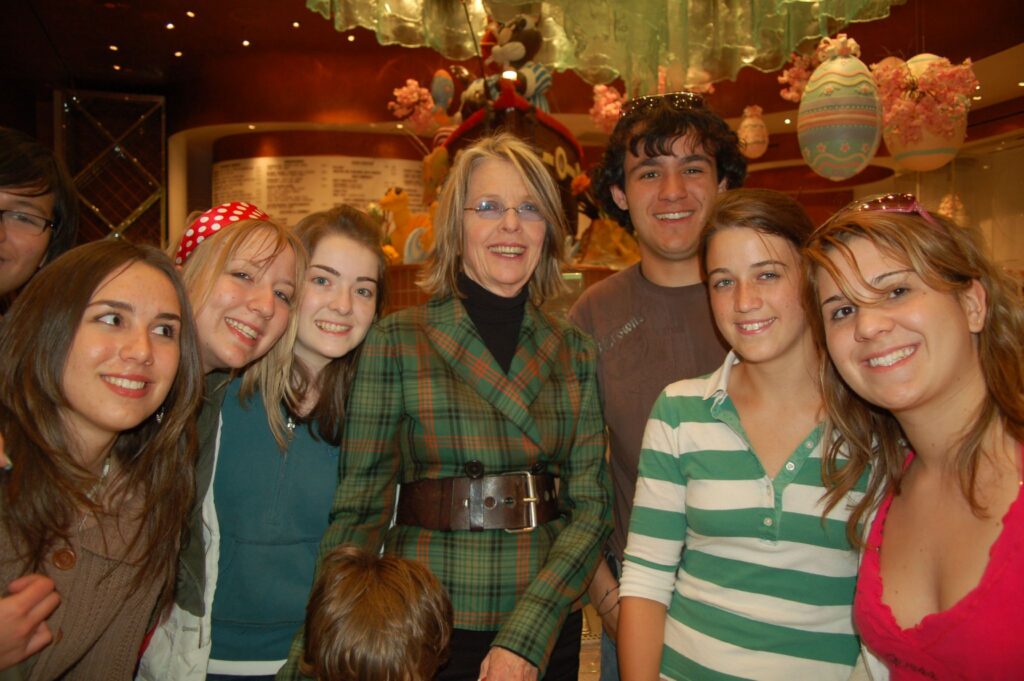
6. **The Woody Allen Collaborations: A Defining Partnership on and off Screen**Diane Keaton’s professional and personal relationship with filmmaker Woody Allen was one of the most significant and defining partnerships of her early career, profoundly shaping her trajectory in the 1970s and beyond. Their connection began in 1968 when she met him while auditioning for his play, “Play It Again, Sam,” a project that would soon transition to Broadway and earn Keaton a Tony nomination. This initial encounter sparked a creative and romantic bond that would produce some of cinema’s most memorable works.
Their romantic relationship, which spanned from approximately 1968 to 1974, evolved into an enduring friendship and a prolific professional collaboration, proving that deep connections can transcend the boundaries of romance. Keaton’s portrayal in “Annie Hall” was so intertwined with Allen’s vision that critic Vincent Canby likened her to Allen’s “Liv Ullman,” emphasizing the director’s unique ability to draw out her “beauty and emotional resources.” This synergy allowed for a dynamic exploration of character that was rare and compelling.
Beyond “Annie Hall,” their cinematic partnership yielded a string of acclaimed films throughout the 1970s, establishing Keaton as a versatile performer in both comedic and dramatic roles. She starred in Allen’s “Sleeper,” “Love and Death,” “Interiors,” “Manhattan,” and the film adaptation of “Play It Again, Sam.” Even after their romantic relationship concluded, their creative bond persisted, leading to her appearances in “Radio Days” in 1987 and “Manhattan Murder Mystery” in 1993, a testament to their mutual respect and artistic understanding. Keaton fondly recalled Allen in her memoir, noting, “He was so hip, with his thick glasses and cool suits… But it was his manner that got me, his way of gesturing, his hands, his coughing and looking down in a self-deprecating way while he told jokes,” illustrating the charm that drew her to him.
7. **Mastering the Craft: Sanford Meisner’s Influence on Her Acting**Long before she became a household name and an Academy Award winner, Diane Keaton honed her formidable acting skills under the rigorous and liberating guidance of Sanford Meisner, one of the most influential acting teachers of the 20th century. Her decision to drop out of college and move to New York was fueled by a profound commitment to her craft, leading her to the Neighborhood Playhouse, where Meisner’s teachings profoundly shaped her artistic identity.
Keaton herself frequently credited Meisner with unlocking a crucial aspect of her performing freedom. She spoke of him giving her “the freedom to chart the complex terrain of human behavior within the safety of his guidance,” a pedagogical approach that made “playing with fire fun.” This emphasis on authentic, instinctual responses, a hallmark of the Meisner technique, allowed Keaton to explore characters with a raw honesty and vulnerability that would become her trademark. It provided her with a robust foundation for approaching diverse roles, from the comedic to the profoundly dramatic.
In her 2012 memoir, “Then Again,” Keaton delved deeper into the transformative impact of her studies with Meisner. She revealed, “More than anything, Sanford Meisner helped me learn to appreciate the darker side of behavior. I always had a knack for sensing it but not yet the courage to delve into such dangerous, illuminating territory.” This statement not only highlights Meisner’s role in her artistic development but also hints at her own introspective nature and willingness to explore the complexities of the human condition, qualities that enriched her performances and made her a truly singular actor.
As we continue to reflect on the immense life and career of Diane Keaton, it becomes increasingly clear that her impact extended far beyond her unforgettable performances. Her unique personal choices, multifaceted talents, and the enduring recognition of her contributions paint a picture of a woman who lived authentically and inspired countless individuals. This enduring spirit, marked by independence and artistic exploration, solidified her status as a true icon of her generation.
Read more about: The Unseen Stages: How History Shaped the Actor, From Forbidden Roles to Modern Breakthroughs
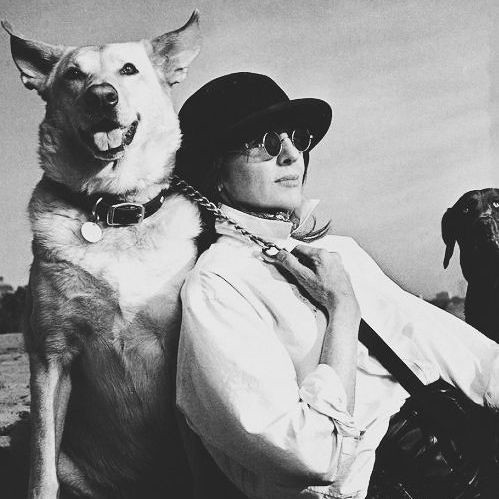
8. **A Path Less Traveled: Never Marrying and Embracing Motherhood in Her Fifties**Diane Keaton’s personal life, much like her professional persona, was characterized by a distinct independence and a willingness to forge her own path. She never married, despite high-profile romantic relationships with acclaimed figures such as Woody Allen, Al Pacino, and Warren Beatty. This choice, she revealed, was deeply influenced by her observations of her own mother, who had four children and, in Keaton’s words, “chose family over her dreams.” Keaton, on the other hand, prioritized her independence and aspirations.
In her memoir, Keaton candidly addressed her decision, writing, “I figured the only way to realize my number-one dream of becoming an actual Broadway musical comedy star was to remain an adoring daughter. Loving a man, a man, and becoming a wife, would have to be put aside.” She reflected on her relationships, stating, “The names changed, from Dave to Woody, then Warren, and finally Al. Could I have made a lasting commitment to them? Hard to say. Subconsciously I must have known it could never work, and because of this they’d never get in the way of achieving my dreams.” This sentiment underscores a lifelong dedication to her artistic journey and personal freedom.
A profound shift in her personal life occurred when Keaton made the decision to adopt two children, daughter Dexter in 1996 and son Duke in 2001, when she was in her fifties. This embraced motherhood later in life, a choice that brought new dimensions to her existence. In 2005, she shared with Life Magazine, “The shocking thing is that I worry differently now. Before kids, if I worried, it was only about myself, but that’s all you do is worry as a parent. It’s rule number one in parenting: secretly worry without letting the kids know you’re worried.”
Her famously whimsical sense of humor often colored discussions of her choices. When asked about never marrying, Keaton once quipped, with characteristic charm, “By the way, no one has ever asked me to marry them, either, so that might be a good answer. I should’ve started with that and called it a day.” This lightness belied a thoughtful consideration of her life’s trajectory, culminating in a final journey that, as an anonymous friend noted, was kept intensely private, surrounded only by her closest family.
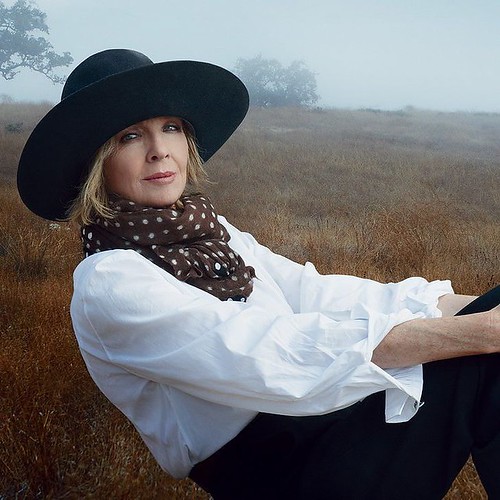
9. **Beyond Acting: A Multifaceted Talent as Director, Author, and Artist**While Diane Keaton is celebrated primarily for her captivating presence on screen, her creative genius was not confined to acting alone. She was a true multihyphenate, exploring and excelling in various artistic endeavors that further showcased her boundless creativity. This diverse portfolio solidified her reputation as someone for whom, as Francis Ford Coppola put it, “Everything about Diane was creativity personified.”
Keaton’s talents extended to directing, where she helmed several notable projects. She directed the critically acclaimed 1995 drama “Unstrung Heroes” and the 2000 sister dramedy “Hanging Up,” in which she also starred alongside Meg Ryan and Lisa Kudrow, working with Nora and Delia Ephron on the screenplay. Her directorial credits also included an episode of the iconic series “Twin Peaks” and even a Belinda Carlisle music video, demonstrating her eclectic range and comfort behind the camera across different mediums.
As an author, Keaton penned several bestselling books, offering intimate glimpses into her life and thoughts. Her memoirs, “Then Again” (2011) and “Let’s Just Say It Wasn’t Pretty,” provided personal reflections, while “Brother & Sister” (2020) delved into her complicated relationship with her brother, Randy. Beyond memoirs, her keen interest in aesthetics manifested in an art and design book titled “The House that Pinterest Built” (2017), reflecting her passion for architecture, photography, and interior design.
Her creative pursuits also branched into other artistic expressions, including a foray into music. Just last year, she released a holiday song titled “First Christmas.” Furthermore, she cultivated a keen interest in photography and interior design, areas that she often shared with the public, and even launched her own label of wine. These diverse passions painted a picture of a woman constantly engaged in creative exploration, adding rich layers to her public identity beyond her cinematic achievements.
Read more about: 14 Core Pillars: Unpacking the Actor’s Journey from Ancient Stages to Modern Stardom and Career Realities

10. **A New Chapter: The Enduring Impact of Her Nancy Meyers Collaborations**The trajectory of Diane Keaton’s career saw a significant and beloved new chapter when she began a long-standing collaboration with filmmaker Nancy Meyers and director Charles Shyer in the late 1980s. This partnership ushered in a series of successful films that showcased Keaton’s enduring appeal and ability to charm new generations, cementing her status as a versatile leading lady well into her later years. This period proved her star-making performances of the 1970s were no flash in the pan.
Their first outing together was the 1987 film “Baby Boom,” which, despite mixed reviews at the time, featured what Pauline Kael described as a “glorious comedy performance that rides over many of the inanities” from Keaton. This role as a high-powered ad executive who unexpectedly inherits an infant highlighted Keaton’s unique ability to blend humor with poignant drama, setting the stage for future collaborations that would resonate deeply with audiences.
The collaboration continued with the hugely popular remake of “Father of the Bride,” directed by Charles Shyer and co-written by Meyers. Keaton, alongside Steve Martin, played the flustered parents of the bride, a role that became a big hit and spawned a successful sequel. These films solidified her image as a relatable, comedic matriarch, endearing her to families and fans across different age groups, further broadening her widespread appeal.
Perhaps the most iconic collaboration came in 2003 with Nancy Meyers’ directorial effort, “Something’s Gotta Give.” In this romantic comedy, Keaton starred opposite Jack Nicholson, playing a divorced playwright who finds an unexpected connection with a playboy music executive, while also being pursued by a younger doctor portrayed by Keanu Reeves. The film earned Keaton what would be her last Oscar nomination and a Golden Globe Award, and she later fondly referred to it as her favorite film. Her character, Erica Barry, with her beautiful Hamptons home and signature ivory outfits, became a key inspiration for the “coastal grandmother” fashion trend, illustrating her lasting influence on popular culture.
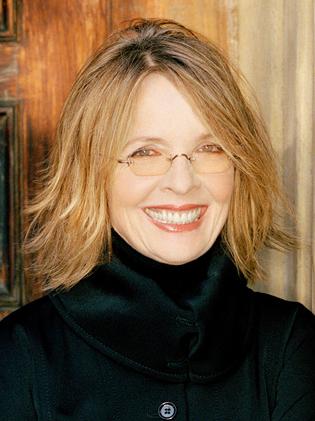
11. **Iconic Roles Beyond Woody Allen: From Dark Dramas to Ensemble Comedies**While her collaborations with Woody Allen defined much of her early career, Diane Keaton’s filmography is replete with other iconic roles that showcased her versatility, from intense dramatic performances to beloved ensemble comedies. These films demonstrated her remarkable ability to inhabit a wide range of characters, solidifying her reputation as one of Hollywood’s most singular talents.
In 1977, the same year as “Annie Hall,” Keaton delivered a searing performance in the crime-drama “Looking for Mr. Goodbar,” a film that earned her significant critical raves. This role, exploring darker thematic territory, highlighted her dramatic depth and proved her capable of complex, challenging portrayals beyond the comedic lightness for which she was increasingly known. It was a testament to her range and willingness to take on diverse projects.
Her dramatic prowess was further recognized with her performance in the 1981 epic “Reds,” directed by and co-starring Warren Beatty, with whom she was romantically linked. In this historical drama, Keaton played the journalist and suffragist Louise Bryant, earning another Academy Award nomination for her compelling portrayal. This role showcased her ability to embody strong, intellectual women navigating significant historical periods, adding another layer to her acclaimed career.
The 1990s saw Keaton team up with fellow Hollywood powerhouses Bette Midler and Goldie Hawn in the hit 1996 comedy “First Wives Club.” This film, about three women exacting revenge on their ex-husbands, was a box office sensation, raking in $181 million domestically. It was widely celebrated as proof that successful films could be led by women in their 50s, a significant statement in the industry. Later in the decade, she garnered her third Oscar nomination for her role in the tearjerker “Marvin’s Room,” where she starred alongside Meryl Streep and Leonardo DiCaprio as a caregiver who suddenly needs care herself, portraying the complexities of family and illness.
12. **A Continuing Legacy: Sustained Work and Enduring Appeal in the 21st Century**Diane Keaton’s career was far from slowing down in the new millennium; she continued to work steadily, captivating new audiences and maintaining her status as a beloved screen presence for over two decades. Her ability to consistently find compelling roles and engage with contemporary narratives ensured her enduring relevance in an ever-changing industry. From poignant family dramas to lighthearted comedies, she embraced a diverse array of projects.
Following her acclaimed performance in “Something’s Gotta Give,” Keaton continued to appear in a succession of memorable films. In 2005, she starred as the dying matriarch reluctant to give her ring to her son in “The Family Stone,” a modern-day Christmas classic that resonated deeply with viewers. She also took on the role of a morning news anchor in “Morning Glory” and delighted audiences in “Because I Said So” (2007), showcasing her versatility in different comedic formats.
One of her most recent successes was the “Book Club” franchise, beginning in 2018, where she starred alongside Jane Fonda, Mary Steenburgen, and Candice Bergen. These films, celebrating female friendship and discovery later in life, were incredibly popular and led to a sequel in 2023, further demonstrating her ability to lead commercially successful and critically appreciated projects well into her seventies. Her consistent work ethic saw her making more than 20 films in two decades.
Her last film, the comedy “Summer Camp,” was released last year, showcasing her continued commitment to her craft. Even in her final years, Keaton had several titles in the works, including a film with Blake Lively and Richard Gere, according to her IMDb. This impressive continuation of her career cemented her legacy as a performer who remained active and influential throughout her long and illustrious life, leaving behind a rich tapestry of cinematic contributions.
Read more about: Exclusive: The Enduring Architects – How Marvel Studios Built a Multi-Decade Cinematic Universe and Sustained Its Star System
13. **Acknowledged Excellence: AFI Life Achievement Award and TCL Chinese Theatre Honors**Diane Keaton’s unparalleled contributions to cinema were formally recognized with prestigious honors that celebrated her enduring impact on the art form. These acknowledgements underscored her status as a true legend, whose work resonated deeply with peers and audiences alike, marking indelible milestones in her career.
In 2017, Keaton was honored with the esteemed AFI Life Achievement Award, a testament to her extraordinary body of work. Speaking to The Associated Press at the time, she described the surreal experience, stating, “I feel like it’s the wedding I never had, or the big gathering I never had, or the retirement party I never had, or all these things that I always avoided — the big bash.” This candid and humorous reflection highlighted her characteristic humility and genuine gratitude for the recognition.
The AFI tribute brought together a constellation of stars who had been inspired by her. Meryl Streep, on stage, remarked on Keaton’s “glittering career” and proclaimed, “She has given us so much happiness.” Reese Witherspoon, Emma Stone, and other luminaries joined in celebrating her unique artistry and the profound influence she had on generations of actors and filmmakers, further emphasizing the depth of respect she commanded in Hollywood.
Just two years ago, in 2022, Keaton “cemented” her legacy with a hand and footprint ceremony outside the iconic TCL Chinese Theatre in Los Angeles. Her children, Dexter and Duke, were present, marking a poignant moment of public celebration with her loved ones. Reflecting on the honor, Keaton characteristically downplayed her achievements, saying, “I don’t think about my film legacy. I’m just lucky to have been here at all in any way, shape or form. I’m just fortunate. I don’t see myself anything other than that.” This statement encapsulates the humble spirit of an icon who consistently remained true to herself.

14. **An Enduring Legacy of Authenticity and Unapologetic Self-Expression**Diane Keaton’s passing leaves behind a legacy defined not only by her Oscar-winning performances and cinematic versatility but also by an unyielding spirit of authenticity and unapologetic self-expression. She was, as Leonardo DiCaprio fittingly described her, “one of a kind. Brilliant, funny and unapologetically herself.” Her ability to infuse every role with a unique blend of vulnerability, intelligence, and quirky charm made her utterly inimitable.
Diane Keaton’s passing leaves behind a legacy defined not only by her Oscar-winning performances and cinematic versatility but also by an unyielding spirit of authenticity and unapologetic self-expression. She was, as Leonardo DiCaprio fittingly described her, “one of a kind. Brilliant, funny and unapologetically herself.” Her ability to infuse every role with a unique blend of vulnerability, intelligence, and quirky charm made her utterly inimitable.
Her influence transcended the screen, notably shaping fashion and female self-expression through her iconic “Annie Hall” style. That distinctive blend of neckties, bowler hats, vests, and khakis was decidedly ahead of its time, demonstrating a gender-nonconforming sartorial boldness that she maintained throughout her life. This commitment to personal style, much like her approach to her career and life choices, showcased a woman who was comfortable in her own skin and refused to conform to expectations.
Bette Midler perfectly encapsulated Keaton’s essence, calling her “hilarious, a complete original, and completely without guile, or any of the competitiveness one would have expected from such a star. What you saw was who she was…oh, la, lala!” This sentiment underscores the genuine nature that endeared her to colleagues and fans alike. Her life was a testament to following one’s own path, embracing diverse passions, and living with a zest that was contagious.
Read more about: Pure Pin-Up Power: These 11 ’80s Movie Actresses Were the Absolute Goddesses on Your Teenage Wall!
From her early struggles with self-consciousness and bulimia in her twenties to her later embrace of motherhood and a multi-hyphenate career, Keaton’s journey was one of constant evolution and self-discovery. Her observation that “At this age, everything seems much more astonishing…There’s a magical aspect, a wonder, to being on this planet” beautifully captures the essence of a woman who continually found joy and meaning. Diane Keaton will be deeply missed, but her enduring spirit, marked by artistic brilliance and unwavering authenticity, will continue to inspire for generations to come.



